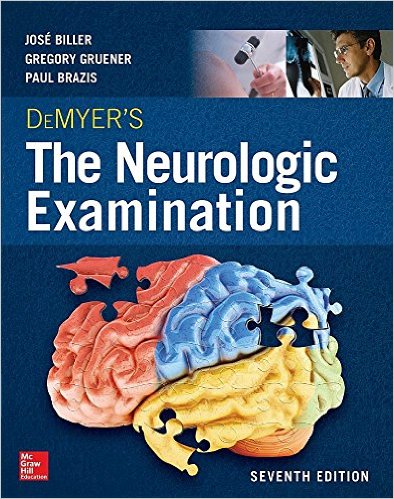Here is my proposed curriculum for learning neurology:
Step 1
Nail down your neuroanatomy with Basic Clinical Neuroscience by Paul A. Young (2007). If you are planning to become a neurologist, neurosurgeon or radiologist, use Sidman’s Neuroanatomy: A Programmed Learning Tool (2007) to help gain a deeper understanding of anatomic and functional neuroanatomy. In the alternative, or as an adjunct, you can watch this genius lecture series on YouTube. In addition, Neurology and Neurosurgery Illustrated by Kenneth W. Lindsay (2010, reviewed here) is a very good neuroanatomy-oriented neurology text.
Step 2
Learn how to do a good neurologically-oriented physical examination. Watch The Three Minute Neurological Examination a few dozen times (reviewed here) and work on your neuroophthalmologic examination with these free lectures and book chapters. Aids to the Examination of the Peripheral Nervous System, 5e, by Michael O’Brien MD is a terrific little book about examining the peripheral nervous system. Future neurologists would benefit from working through DeMyer’s The Neurologic Examination: A Programmed Text, 7e (2016), which provides a very deep understanding of the neurologic examination.

Step 3
Learn neuroradiology. I’d start with Brain CT Scans in Clinical Practice by Usiakimi Igbaseimokumo MD (2009, reviewed here) and Neuroradiology Companion: Methods, Guidelines, and Imaging Fundamentals by Mauricio Castillo MD.
Step 4
Read Neurology: A Clinician’s Approach (2010), which is a very practical and levelheaded basic clinical neurology book.
Step 5
Read Movement Disorders in Clinical Practice by K. Ray Chaudhuri (2010, reviewed here)


Leave a Reply